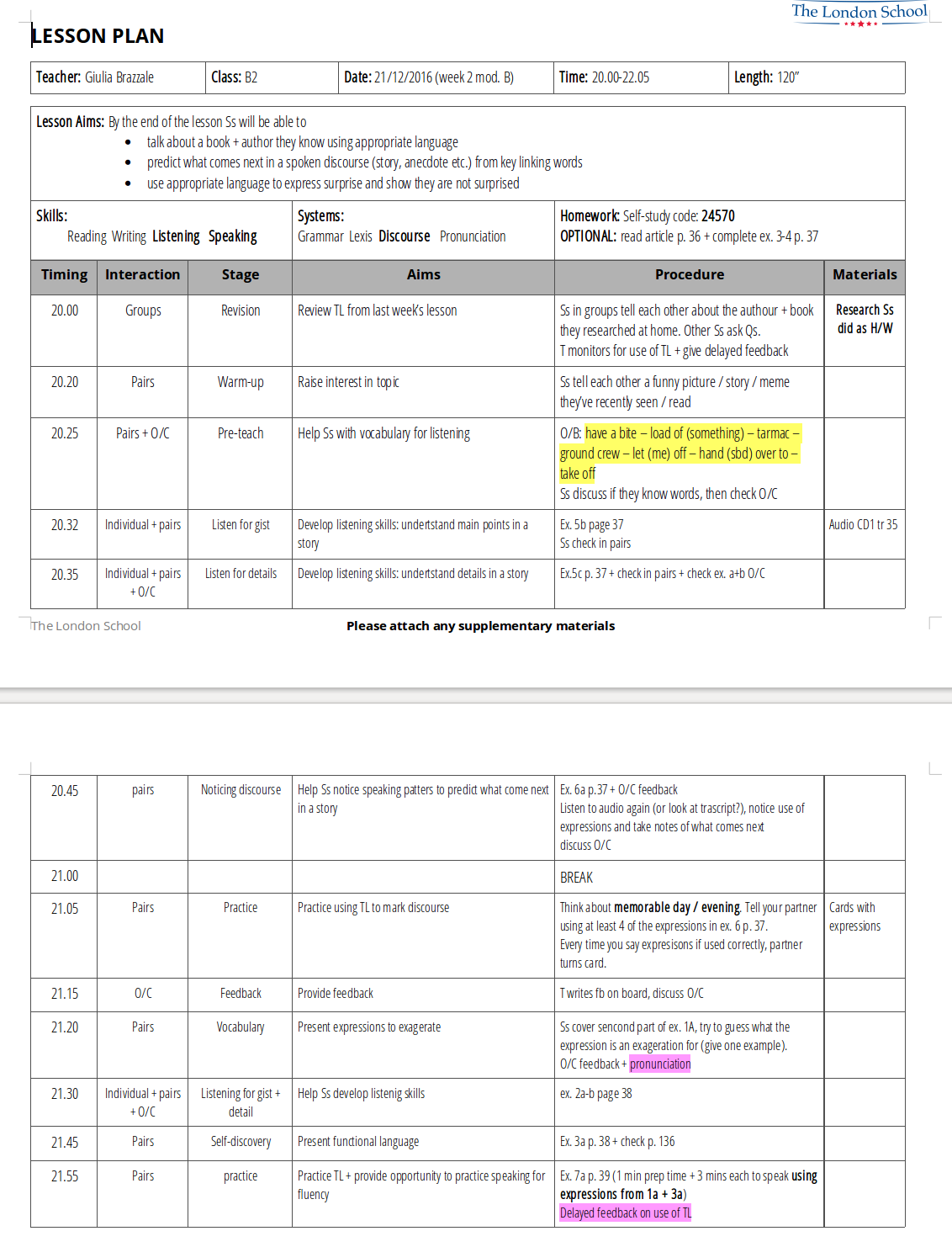Some time ago we had a training session about lesson planning at our school. Due to quality standards, we are required to write formal lesson plans for every lesson we teach, which can be quite overwhelming when you teach an average of 25-30 hours a week.
So to vent my frustration I went online and had a very positive conversation on Twitter with Vendrana, Laura, Maria, Liam and Gemma about the issue, where they suggested different ways to keep lesson planning effective while cutting the actual time spent writing plans.
Here are some of the ideas that came up:
Create yr own teaching pattern & lesson samples/drafts easy to adapt Select resources with good teacher’s notes Recycle @wanderingelt
— MariaConca (@MConca16) November 24, 2016
Maybe you can get Ss involved and ask them what they want to do next class or how they want to study..
— Liam T (@Liam_ELT) November 23, 2016
It’s more important to focus on staging and aims than procedure, so I normally bullet point those before each class. #eltchat
— David Pickup (@sharefl_blog) November 23, 2016
Someone also shared links to two great articles by Elly Setterfield and Sandy Millin on how they manage to plan their lessons on a daily basis.
So, following all this and a lot of reflection on the topic, here are my considerations and my personal preferences on lesson planning.
First of all, I was very intrigued by David’s tweet. I actually started to do what he suggested — focus on the aims leaving out of the LP a lot of the procedures that I know quite well and don’t need to write in detail — and I found it incredibly beneficial. I discovered that if I have the aims very clear in my head (and writing them down definitely helps), planning becomes so much easier.
Secondly, I found that the more you write lesson plans, the easier it gets. It becomes a habit and will take less and less time. I could see the difference in just a few weeks, so I suppose that after a few months the whole process will have become second nature.
Lastly, as both Sandy and Elly pointed out, I use colours to remember materials I need to bring in class with me, to remind myself of things I tend to forget and to highlight language and important instructions. I don’t have a colour code yet, as Sandy has, but I’m working on it. 🙂
Here’s one of my recent lesson plans (I now type them to avoid wasting a lot of paper):

One thing I still get completely wrong is timing, but I’m trying to work on that. I also print out my plans and use them in class to take notes on what works and what doesn’t work, emergent language or action points for future lessons. So what I used to see as a burden is now gradually becoming a useful tool to plan and reflect on my lessons.

Good to see that post helped! Here’s another one that might be useful for timing: https://sandymillin.wordpress.com/2015/02/09/timing-your-elementary-classes/
Thank you Sandy, I’ll definitely have a look.
Holy Hannah-that’s the lesson template you are require to use?? No wonder there is frustration!! I agree both with Maria and David-your aims are key but getting a pattern for yourself can save you hours. I have instructional routines that I use for various lessons that I simply adjust for the specific content that is coming up. The initial plan took time to create but a this point, it’s a lot of copy and paste with just a few tweaks here and there. The result is still effective and useful planning though-you don’t want to fall into the trap of complying with a directive merely for complaince’s sake and be left with something un-useful to your instruction.
Unfortunately producing this type of plan is a requirement. However I’m trying to make the most out of it. And I do a lot of copy and paste too.
Thanks for sharing Giulia – I’m so pleased I wrote that post as the discussions and issues it’s raised have been so interesting! I’m glad you’ve found planning does get quicker – that’s always been the case in my experience but it’s always nice when other people confirm it.
Merry Christmas!
Elly
Thank you for starting the conversation and Merry Christmas to you too!:)